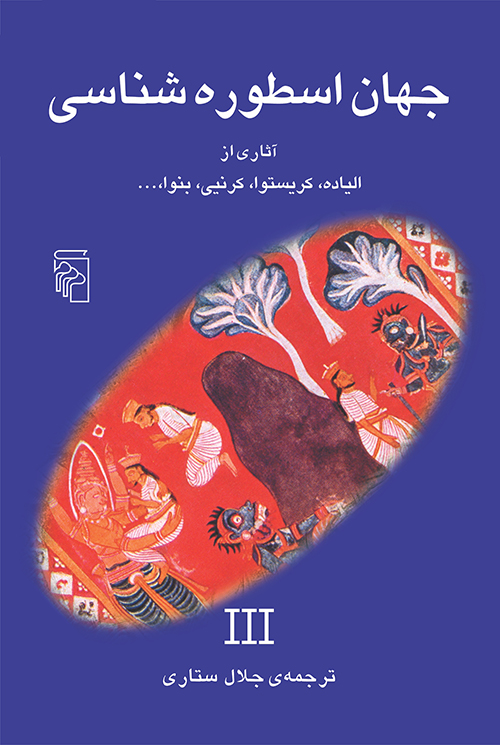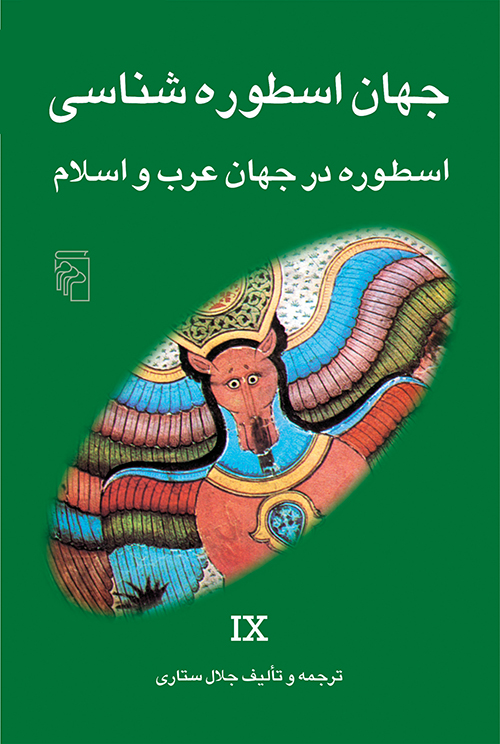


Books in series

جهان اسطورهشناسی ۱
1998

جهان اسطورهشناسی ۲
2012

جهان اسطورهشناسی ۳
2014

Flying Saucers
A Modern Myth of Things Seen in the Skies
1958

جهان اسطورهشناسی ۸
آثاری از یونگ، پل دیل، روژه کایو
2005

جهان اسطورهشناسی ۹
اسطوره در جهان عرب و اسلام
2005

جهان اسطورهشناسی ۱۰
اسطورهی ايرانی
2006

جهان اسطورهشناسی ۱۱
آیین و اسطوره
2010
Authors

Karl Abraham was an early important and influential German psychoanalyst, and a collaborator of Sigmund Freud, who called him his 'best pupil'. In 1907, he had his first contact with Freud, with whom he developed a lifetime relationship. Returning to Germany, he founded the Berliner Society of Psychoanalysis in 1910. He was the president of the International Psychoanalytical Association from 1914 to 1918 and again in 1925. Abraham collaborated with Freud on the understanding of manic-depressive illness, leading to Freud's paper on 'Mourning and Melancholia' in 1917. He was the analyst of Melanie Klein during 1924-1925, and of a number of other British psychoanalysts, including Edward Glover, James Glover, and Alix Strachey. He was a mentor for an influential group of German analysts, including Karen Horney, Helene Deutsch, and Franz Alexander. In the oral stage of development, the first relationships children have with objects (caretakers) determine their subsequent relationship to reality. Oral satisfaction can result in self-assurance and optimism, whereas oral fixation can lead to pessimism and depression. Moreover, a person with an oral fixation will present a disinclination to take care of him/herself and will require others to look after him/her. This may be expressed through extreme passivity (corresponding to the oral benign suckling substage) or through a highly active oral-sadistic behaviour (corresponding to the later sadistic biting substage). In the anal stage, when the training in cleanliness starts too early, conflicts may result between a conscious attitude of obedience and an unconscious desire for resistance. This can lead to traits such as frugality, orderliness and obstinacy, as well as to obsessional neurosis as a result of anal fixation (Abraham, 1921). In addition, Abraham based his understanding of manic-depressive illness on the study of the painter Giovanni Segantini: an actual event of loss is not itself sufficient to bring the psychological disturbance involved in melancholic depression. This disturbance is linked with disappointing incidents of early childhood; in the case of men always with the mother. This concept of the prooedipal “bad” mother was a new development in contrast to Freud’s oedipal mother and paved the way for the theories of Melanie Klein (May-Tolzmann, 1997). Another important contribution is his work “A short study of the Development of the Libido” (1924b), where he elaborated on Sigmund Freud’s “Mourning and Melancholia” (1917) and demonstrated the vicissitudes of normal and pathological object relations and reactions to object loss. Abraham (1920) also showed interest in cultural issues. He analyzed various myths suggesting their relation to dreams (1909) and wrote an interpretation of the spiritual activities of the Egyptian monotheistic Pharaoh Amenhotep IV (1912). Abraham died on 25 December 1925 from complications of a lung infection and may have suffered from lung cancer.

Carl Gustav Jung (/jʊŋ/; German: [ˈkarl ˈɡʊstaf jʊŋ]), often referred to as C. G. Jung, was a Swiss psychiatrist and psychotherapist who founded analytical psychology. Jung proposed and developed the concepts of extraversion and introversion; archetypes, and the collective unconscious. His work has been influential in psychiatry and in the study of religion, philosophy, archeology, anthropology, literature, and related fields. He was a prolific writer, many of whose works were not published until after his death. The central concept of analytical psychology is individuation—the psychological process of integrating the opposites, including the conscious with the unconscious, while still maintaining their relative autonomy. Jung considered individuation to be the central process of human development. Jung created some of the best known psychological concepts, including the archetype, the collective unconscious, the complex, and synchronicity. The Myers-Briggs Type Indicator (MBTI), a popular psychometric instrument, has been developed from Jung's theory of psychological types. Though he was a practising clinician and considered himself to be a scientist, much of his life's work was spent exploring tangential areas such as Eastern and Western philosophy, alchemy, astrology, and sociology, as well as literature and the arts. Jung's interest in philosophy and the occult led many to view him as a mystic, although his ambition was to be seen as a man of science. His influence on popular psychology, the "psychologization of religion", spirituality and the New Age movement has been immense.

Luc Benoist born Luc Didier Marie Benoist-Lucy (1893–1980) was a French essayist and art historian. He published many books about the art history. His interests were centered on spirituality and symbolism. https://en.wikipedia.org/wiki/Luc_Ben...


Jalal Sattari جلال ستاری ( ۱۴ مرداد ۱۳۱۰ - ۹ مرداد ۱۴۰۰) محقق، اسطوره شناس و اندیشمند ایرانی است، وی بالغ بر ۹۰ جلد کتاب در زمینههای اسطوره شناسی، ادبیات نمایشی و نقد فرهنگی در طی ۵۰ سال به رشته تحریر در آورده، این کتب بعضاً از کتابهای مرجع و شاخص در زمینههای تخصصی خود هستند وی در سال ۸۴ به پاس عمری تلاش فرهنگی نشان آفیسیه (نشان ادب و هنر فرانسه) را دریافت کرد. . از جمله آثار آقای ستاری میتوان به «چشم انداز اسطوره»، «زبان رمزی افسانهها»، «زبان رمزی قصههای پرشور»، «رمز پردازی آتش»، «اسطوره و رمز»، در زمینه اسطوره و روانشناسی، «حالات عشق مجنون»، «افسون شهرزاد»، «درد عشق زلیخا»، «عشق صوفیانه»، «پژوهش در قصه اصحاب کهف»، «پژوهش در قصه یونس و ماهی»، «پژوهشی در قصه شیخ صنعان و دختر ترسا»، «پژوهشی در قصه سلیمان و بلقیس»، «گفت و گوی شهرزاد و شهریار» و آثاری دیگر در این زمینه اشاره کرد. وی همچنین در زمینه تحلیل مباحث ادبی و اسطورهای ادبیات و فرهنگ ایران کتابهای «نمایش در شرق»، «نماد و نمایش»، «آیین و اسطوره در تئاتر»، «تراژدی و انسان»، «پرده داری و شبیه سازی»، «تقلید و تماشا»، تالیف و انتشار داد. کتاب «در بیدولتی فرهنگ» وی نیز از جمله معدود تحلیلها در زمینه وضعیت فرهنگ در دوره پهلوی است که از سوی نشر مرکز (ناشرعمده آثار آقای ستاری) به بازار کتاب عرضه شده بود

Claude Lévi-Strauss was a French anthropologist, well-known for his development of structural anthropology. He was born in Belgium to French parents who were living in Brussels at the time, but he grew up in Paris. His father was an artist, and a member of an intellectual French Jewish family. Lévi-Strauss studied at the University of Paris. From 1935-9 he was Professor at the University of Sao Paulo making several expeditions to central Brazil. Between 1942-1945 he was Professor at the New School for Social Research. In 1950 he became Director of Studies at the Ecole Practique des Hautes Etudes. In 1959 Lévi-Strauss assumed the Chair of Social Anthroplogy at the College de France. His books include The Raw and the Cooked, The Savage Mind, Structural Anthropology and Totemism (Encyclopedia of World Biography). Some of the reasons for his popularity are in his rejection of history and humanism, in his refusal to see Western civilization as privileged and unique, in his emphasis on form over content and in his insistence that the savage mind is equal to the civilized mind. Lévi-Strauss did many things in his life including studying Law and Philosophy. He also did considerable reading among literary masterpieces, and was deeply immersed in classical and contemporary music. Lévi-Strauss was awarded the Wenner-Gren Foundation's Viking Fund Medal for 1966 and the Erasmus Prize in 1975. He was also awarded four honorary degrees from Oxford, Yale, Havard and Columbia. Strauss held several memberships in institutions including the National Academy of Sciences, the American Academy and Institute of Arts and Letters, the American Academy of Arts and Sciences, and the American Philosophical Society (Encyclopedia of World Biography).

Jean Herbert was a French Orientalist and one of the first generation of interpreters for the United Nations organization. He was chief interpreter of the United Nations interpretation service in New York. Herbert was one of the pioneer veteran and model consecutive interpreters from the League of Nations and the International Labor Office. He worked between World War I and World War II for different international organizations. Towards 1930, he became interested in Buddhism and the Far East prompting him to travel to India, China and other Buddhist countries, leading to the authorship of many books related to the Far East such as his Introduction to Asia. In 1946 he founded the collection Spiritualités vivantes in the publishing house Éditions Albin Michel. He published his Manuel de l’interprete (The Interpreter’s Handbook) in 1952. He also founded and directed two collections of multilingual and technical dictionaries published by Elsevier and sponsored by the Universities of Paris, Heidelberg, Mainz, Trieste and Georgetown University. Herbert also became a vice-president—and then president—of the International Association of Conference Interpreters (AIIC) for three years. After retiring from the United Nations in 1954, Herbert continued freelancing and traveled to the Far East, Madagascar and the Middle East. He held the chair of Eastern Mythologies at the University of Geneva, where he taught from 1954 to 1964.